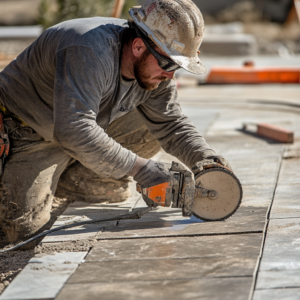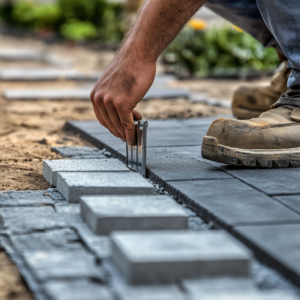The use of the correct type of sand is a very important part of any paver installation. Its function is to hold the pavers firm in place, preventing wobbliness and the growth of weeds between each paver. But does any sand work? What is the difference between paving sand and play sand?
Does it really matter? I mean, it is all sand, right? Not really. Paver sand can contain traces of tremolite and silica, so it is a big no-no to be used in sandboxes.
In this article, we’ll break down the compositions of both types of sand and the correct applications for each one. But first, let’s understand what sand really is.
You may also like: How to re-sand pavers and make your patio look new again
Jump to:
Paving Sand vs Play Sand – What is Sand?
Sand is, basically, some type of mineral crushed into microscopic pieces due to the weathering process that a mineral goes through, like wind, sea waves, or rain.
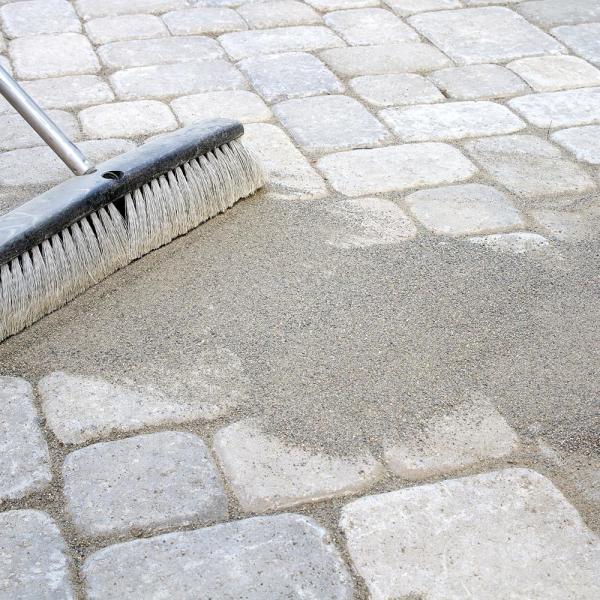
So, there are actually a lot of different types of sand – and they are not the same. The composition of a specific type of sand will depend on the original mineral from which it came.
The most common type of sand comes from quartz. It is considered to be the “natural” sand. Quartz particles do not dissolve in water and do not decompose as easily as other minerals.
Beaches that have a particular white and fine sand can be found at places without rich nearby sources of quartz. In those places, the sand is composed of calcium that comes from the shells and skeletons of marine organisms.
There are tons of other examples of different kinds of sand, both in texture and in color. But the explanation is always the same: they are like that because they are, essentially, very tiny particles of a local mineral that presents those characteristics.
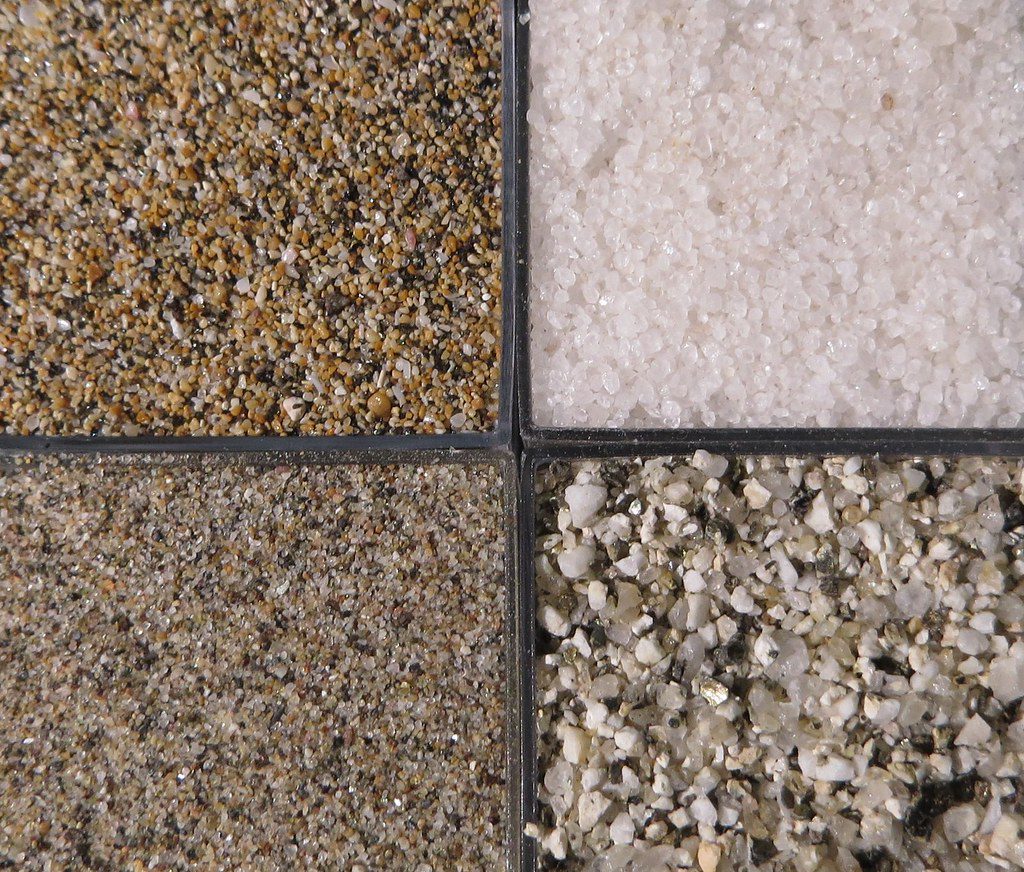
Differences Between Paving Sand vs Play Sand
Now that you know what sand is, broadly speaking, it is easy to imagine the main difference between paver sand and play sand.
The play sand goes through a filtering process to get rid of any minerals that can be harmful to humans, while the paver sand does not worry about that. But both of them can still be altered, either chemically or mechanically.
Play sand, for example, undergoes several treatment processes to get rid of hazardous materials, mainly ferrous oxide. It is also turned fine and rounded when going through a literal washing process.
Paver sand also goes through some treatments, but instead of removing substances, you are actually adding new ones. Most of these substances are polymers that add coarseness to the sand.
Different Types of “Paver Sand”
Technically, “paver sand” isn’t a sand type itself.
Any sand you use for bedding or jointing in paver projects becomes paver sand. However, most homeowners and contractors are usually referring to two main types: regular paver sand (often called bedding sand) and polymeric sand.
Bedding Sand
This is coarse, gritty sand placed under pavers to create a solid but flexible foundation. Bedding sand allows the pavers to settle properly while still enabling small shifts that prevent cracking.
It’s typically made from angular grains rather than rounded ones, which helps the particles interlock better for improved stability. Without a proper bedding layer, pavers can wobble, sink, or shift unevenly over time.
Polymeric Sand
Polymeric sand is a newer innovation that’s used to fill the joints between pavers. Unlike regular sand, polymeric sand contains a blend of fine grains mixed with additives like silica and polymer binding agents. When water is applied, the polymeric sand hardens to form a semi-rigid, weed-resistant, and erosion-proof joint.
Read also: Polymeric sand colors – how to choose
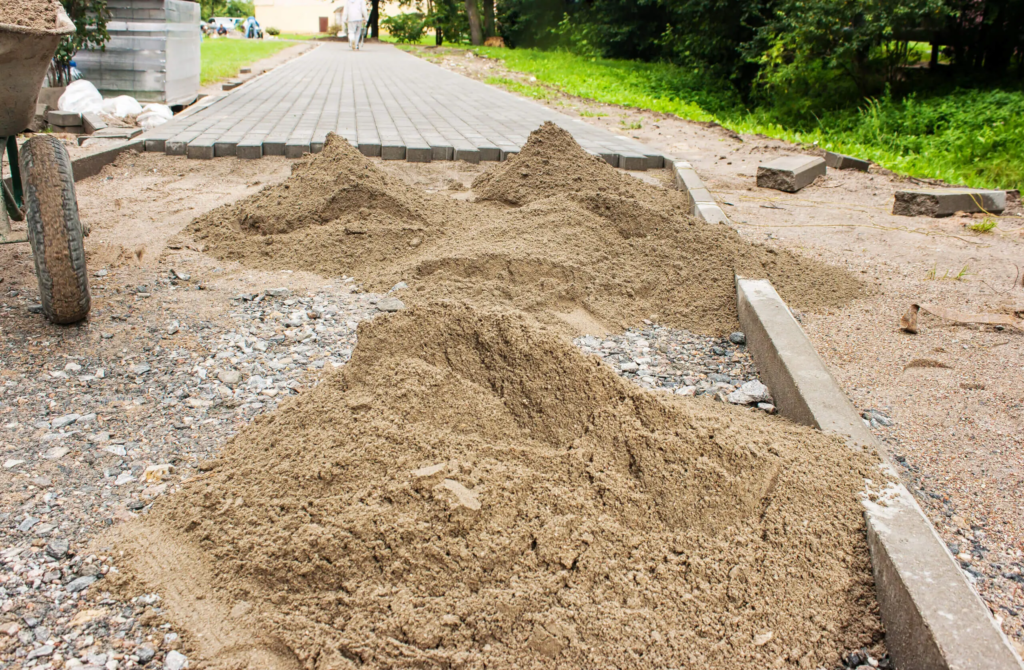
Other specialty variations exist, too, such as resin-modified sands and high-performance sands designed for extreme weather conditions or heavy traffic areas. Some polymeric sands also offer dust-free formulas or enhanced flexibility to resist cracking during ground movement.
Choosing the right type of paver sand depends on your project needs. Bedding sand and polymeric sand work together—one for the base layer, the other for the joints—to ensure a long-lasting, beautiful installation.
Signs You Used the Wrong Sand
Even with the best intentions, using the wrong type of sand for a paver project can lead to visible and costly problems. Here are some warning signs that your installation may have the wrong sand in place:
1. Shifting or Wobbling Pavers
If your pavers start moving when you walk or drive over them, it’s a clear sign that the bedding sand underneath wasn’t coarse or compacted properly. Fine-grained or soft sands like play sand can’t create the necessary friction to hold pavers firmly in place.
2. Weed Growth Between Joints
Seeing weeds pop up between your pavers just a few months after installation? This often happens when play sand or regular loose sand is used instead of polymeric sand. Without the bonding power of polymeric sand, gaps remain wide open for seeds to settle and grow.
3. Sand Erosion After Rain
If you notice that the sand between your pavers washes away after a storm, the wrong type of sand – or improper installation – might be to blame. Polymeric sand resists erosion when properly activated with water, whereas regular sand easily washes out.
4. Ant Infestations
Ants love to burrow through loose sand. If you see ant hills forming between your pavers, it’s another strong indicator that your joint material isn’t polymeric sand.
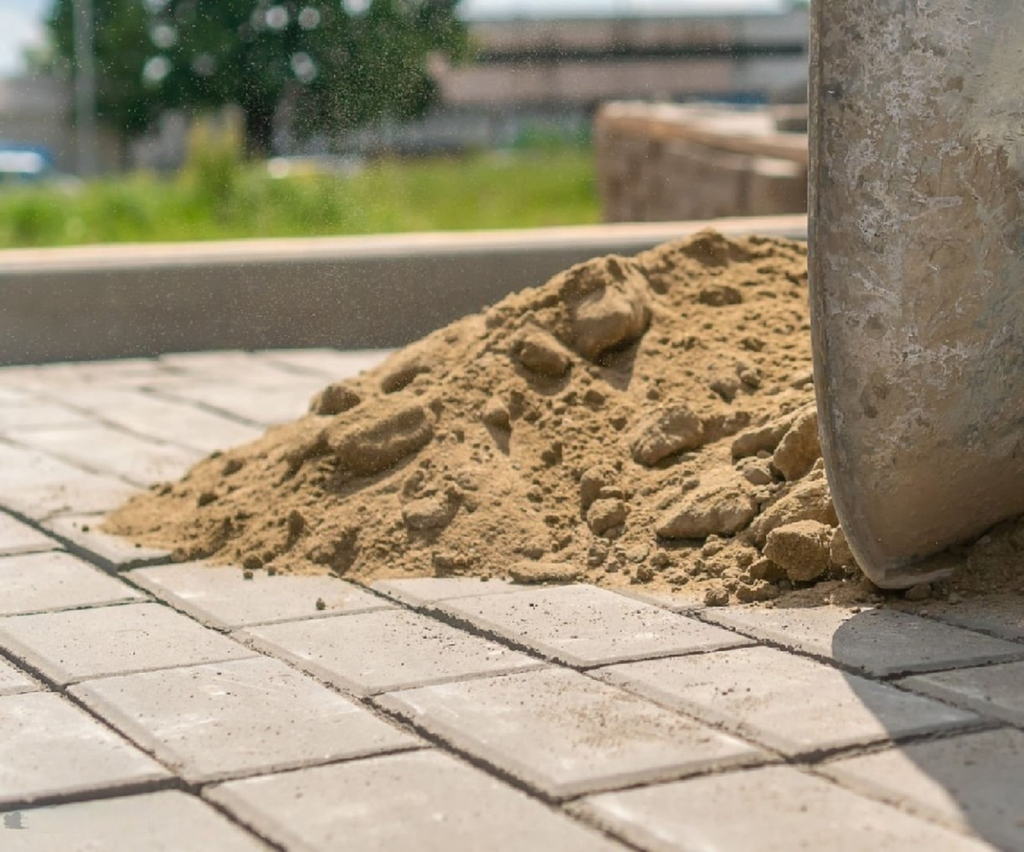
Paving Sand vs Play Sand: The Importance of Choosing Correctly
Choosing the wrong type of sand can lead to serious problems.
Play sand is made for close human contact, think sandboxes, crafts, and sensory tables. It must be safe to touch, breathe, and occasionally even ingest (in the case of kids). Using untreated regular sand in these scenarios can pose real health risks, like inhaling silica dust or exposure to harmful minerals.
On the flip side, using play sand in a paver installation is a bad idea. It lacks the structural properties needed for proper stabilization. It won’t lock pavers in place effectively, meaning you’ll likely see joint erosion, weed growth, and shifting far sooner than expected.
Plus, play sand won’t prevent weed roots from penetrating joints, leading to major maintenance headaches later on.
Bottom line: the right sand matters, both for safety and performance.
Why Polymeric Sand is the Best for Paver Installations
When comparing paving sand vs play sand, it’s clear that polymeric sand stands out as the ideal material for hardscaping.
Polymeric sand creates a semi-solid, yet flexible joint between pavers once activated by water. This flexibility is crucial, as it allows the surface to endure temperature changes, foot traffic, and minor shifting of the ground without cracking or breaking apart.
Another major advantage is weed and insect prevention. Because polymeric sand hardens, it dramatically reduces the spaces where weeds can grow or where ants can build tunnels.
Additionally, polymeric sand is highly resistant to erosion. Even after heavy rain, properly installed joints remain intact, saving homeowners time and money on repairs.
Compared to traditional sand, polymeric sand also offers better aesthetics. It comes in multiple colors, allowing for seamless matching with different paver styles and layouts.
However, proper installation is key. The sand must be completely dry when applied and evenly spread across the surface before watering it in. Otherwise, it may fail to bond properly or cause hazing on paver surfaces.
If you’re planning a paver project, using polymeric sand is the safest bet for long-term durability and minimal upkeep.
When in Doubt, Call a Professional!
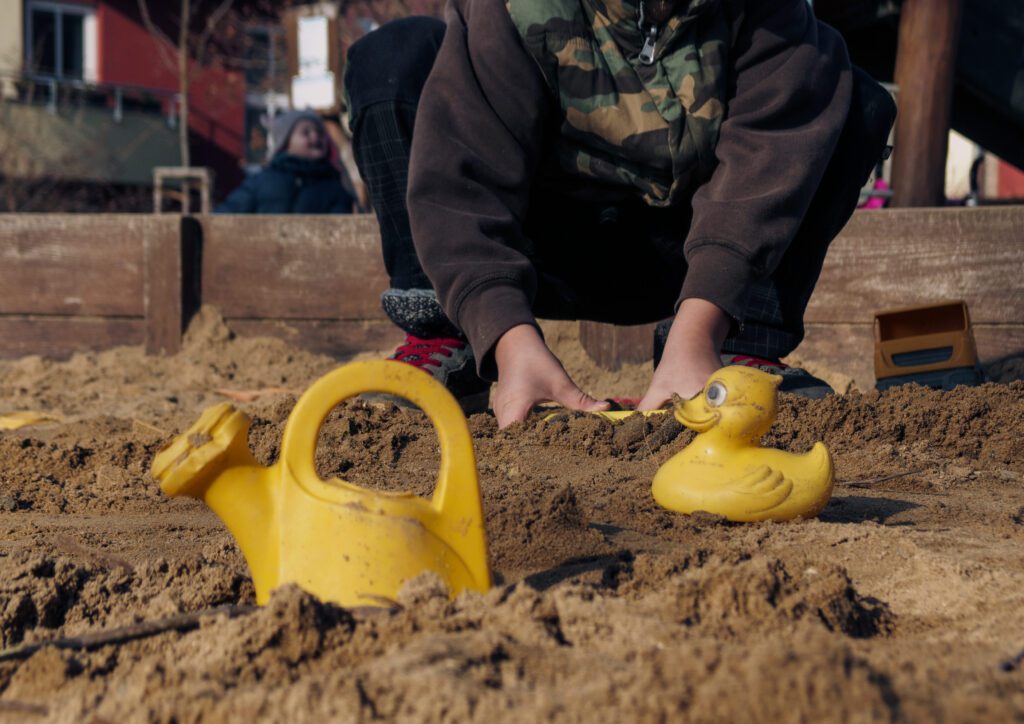
If you’re not sure what kind of sand to use on your hardscape project, you can always ask a professional for help.
If you happen to be around Sarasota, in FL, the best professionals in the field can be found at JS Brick. For more than 20 years, we have been providing the best work in the installation and maintenance of pavers.
Get in contact right now through the number +1 941 586 9140 for a free estimate on your hardscape project.

